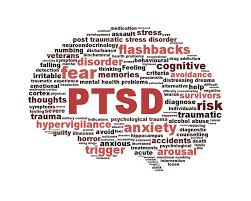“Trauma is a fact of life. It does not however, have to be a life sentence.” Peter Levine
The deeply subjective and intimate nature of traumatic experience is such, that everyone will develop and hold their own personal meaning narratives regarding their traumatic encounters. Despite experiences of trauma being relatively common, there is an incredibly broad range of variance in people’s responses to them, indicating that it is not merely the exposure to the traumatic events that matters, but how we construct meaning and make sense of them (1).
From a neurological perspective, our brain stores whatever we experience within our lives away as memories, consisting of sensory data in the form of images, sounds,smells, taste and physical sensations related to the event. There will also be associated beliefs and emotions, and most of the time our brain can do what it needs to do, to process what’s happened and file it away as a healthy, adaptable memory that we can access when and if we need to. However, when we experience events in our lives that are too big or overwhelming at the time for our brain to carry out the neurological tasks it needs to store healthy memories, this can cause major problems. Post-traumatic stress like symptoms such as flashbacks and nightmares represent common examples of this, which are literally the brains way of trying to store the sensory data associated with the event away as a healthy memory. The problem is, that because this process is being prevented due to the overwhelming nature of the information, that parts of the brain that respond to threat, are still responding to whatever happened as if it’s happening right now, rather than in the past. Events that fall outside the realms of ‘natural human experience’ represent typical examples of traumatic events, which in other words means the types of things that don’t happen to us every day. Car crashes, physical/sexual assaults, rape, natural disasters and war traumas are all representative of such experiences, although as I mentioned earlier, there are a range of encounters that may result in traumatisation, many of which may appear less extreme, but are just as harmful and debilitating.
The terms ‘big T’s’ and ‘little t’s’ are used in much of the psychological research literature about trauma, to distinguish between specific types of traumatic events. Previously mentioned examples such as car crashes and natural disasters would undoubtedly fall into the former category, and are usually ‘single incident traumas’. Small t’s by contrast refer to the types of experiences that despite their potential to appear on the surface as less extreme, are nonetheless incredibly painful and damaging, and are often part of a complex network of other small t experiences that may have happened in childhood, and caused major distress since they happened. Typical examples might include specific arguments that we may have had with parents, carers or siblings, distressing experiences at school such as bullying, the death of a loved one or a pet or feelings of loneliness or isolation. These types of traumas can be incredibly insidious, slowly eating away at our self-image, self confidence and self-esteem, affecting our ability to develop and maintain relationships, and/or fully function in our everyday lives. I do feel it’s important to stress here, that the term ‘smaller t’s’ although maybe appearing to minimize or dismiss these types of experience, is not intended to do so. On the contrary, in my experience as a therapist working and specialising in trauma, there is nothing remotely ‘small’ about these types of experiences. Many clients I have worked with over the years however do seem to struggle in initially believing this themselves, as they’re often incredibly self-critical about the fact that they’re battling with these types of issues often years after the events took place. I am unfortunately very used to hearing clients coming out with such comments as “I should be over this by now”, or “I know this sounds stupid because it was so long ago”. Ironically, comments like this are very clear examples of the types of damage such traumatic experiences may cause to our views and perception of ourselves, which then become maintenance factors that feed the problem, and keep the vicious, destructive cycle going.
In my experience, from a clinical treatment perspective, small t’s are much more common regarding the reasons people seek and and enter therapy with me. Maybe that’s due to the types of services that I’ve worked for over the years, where clients presenting with complex trauma as a result of what are often difficult and/or distressing childhoods are typical. Big T’s in the form of ‘single incident events’ can be much simpler, and faster to treat with psychotherapy, whether that’s using evidence based, recommended psychological trauma treatments such as eye movement desensitisation reprocessing (EMDR) – (see fig 1), or trauma focused cognitive behavioural therapy (TF-CBT) – (see fig 2), or more traditional forms of talking therapy treatment. Smaller t’s can often represent a much more potentially complex and longer term type of work, although this is dependent on a broad range of factors, and each and every client is different. The good news is, that as the Peter Levine quote at the beginning of this article states, no one has to suffer with symptoms of trauma for the rest of their lives, because it is treatable, and we can recover and live healthy, fulfilling lives after trauma!
References:
- Cromer, L. D. & Smyth, J. M. (2010), Making Meaning of Trauma: Trauma Exposure Doesn’t Tell the Whole Story. Journal of Contemporary Psychotherapy, 40, (2), 65 – 72
